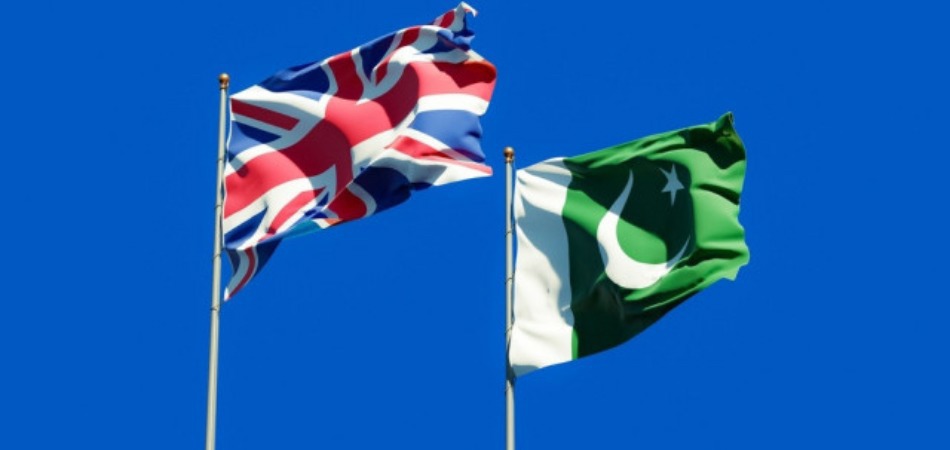Finance Ministry rejects World Bank’s GDP growth projections as unrealistic

MG News | October 11, 2021 at 10:19 AM GMT+05:00
October 11, 2021 (MLN): The government on Friday called the World Bank's (WB) assessment of easing Pakistan's GDP growth forecast to 3.5% as “unrealistic”.
Ministry of Finance (MoF) in its detailed response issued against a report titled "The latest South Asia Economic Focus titled Shifting Gears: Digitization and Services-Led Development” published by the World Bank stated that World Bank’s growth estimates of 3.5 % in FY2021 against National Accounts (NAC) Committee estimates of 3.94 %, released by the PBS were also based on unrealistic assessment.
According to MoF, the provisional estimate of GDP growth for FY2021 was 3.94 % based on 2.8 % growth in Agriculture, 3.6% growth in Industry and 4.4% growth in services. However, LSM growth was provisionally taken as 9.3 % in NA for estimating GDP growth 3.94%.
LSM data is available with two months lag and the recent data released by PBS on LSM recorded growth of 15.2 % for
FY 2021. Further, recent data on crops mentioned by Federal Committee on Agriculture (FCA) suggest that production of important crops is higher than taken in NA, 2021. Wheat production is recorded at 27.5 million tons as compared to 27.3 million tons, while production of Maize is 8.9 million against 8.5 million tons released by PBS for estimating GDP growth 3.94%.
After incorporating latest available information, the GDP growth in FY2021 will improve further above 3.94% as compared to 3.5% estimates by the World Bank, Ministry said.
For FY2022, WB projection of 3.4% for GDP growth is again underestimated. It is pertinent to mention that economy of Pakistan has shown V-shaped recovery in FY2021 without creating any external and internal imbalances. The government is committed to ensure that the growth momentum remains intact with macroeconomic stability.
Thus, it is expected that GDP growth for FY2022 will remain close to 5%.
In this context it is worth mentioning that global GDP growth rate in 2020 was recorded at -3.2% and is projected to grow by 6.0% and 4.9% in 2021 and 2022 respectively.
On the basis of fast recovery expected globally, especially Pakistan’s main trading partners, it is expected to be translated to domestic economy as well.
Domestically, production of important crops is encouraging like sugarcane 87.7 million tons (81.0 million tons last year), Rice 8.8 million tons (8.4 million tons last year), Maize 9.0 million tons (8.9 million tons last year) and Cotton 8.5 million tons (7.1 million tons last year). While target for wheat is set at 28.9 million tons (27.5 million tons last year). Further, government is taking measures to enhance agriculture performance such as Agriculture Emergency Program, Agriculture Transformation Plan, Prime Minister Kharif Package, incentives to Livestock sector and increase in Wheat Support price.
Better crop production together with government’s measures, it is expected that the agriculture sector will perform better.
Within industry, LSM recorded a growth of 2.3 % in Jul, FY2022. Due to the closure of industrial activities during holidays in Eid-ul-Adha and monsoon rains which spread over 15 days.
Further, domestic cement dispatches increased by 3.92% to 11.279 MT during Jul-Sep FY2022 (10.853 MT last year).
Car production and sale increased by 111.7% and 92.8% respectively during Jul-Aug FY2022 while tractor production and sale increased by 38.7% and 18.5% respectively. Similarly, total oil sales increased by 21 .0% to 5.8 mn tonnes during Jul-Sep FY2022 (4.8 mn tonnes last year). The performance reflects robust economic activities without any disruption.
To further boost the industrial sector, government is taking all possible measures like Special package for construction sector; relief measures in form of tax exemptions to automobile, Special Economic Zones, Special Technology Zones, special facilitation for SMEs in form of risk sharing in collateral free lending, sales tax concessions to cottage industry, concessional rate of refinance schemes include EFS and LTFF, special electricity tariffs for industrial use, making CPEC the platform where industries will be relocated, reduction in tax on textile products and tax relief to oil refineries so that they could turn to Euro-5 fuel. These measures will help in significant growth in industry. Overall, the commodity producing sector will perform better and its spill over impact would be realized on the services sector.
The current data for June 2021 shows that YoY growth in Assets remained 18.9 %. Further an increasing trend is seen in both Advances and Deposits of Banks. Thus, services sector is projected to continue its growth on account of better performance of Agriculture, Industry and financial sector. Further, mass vaccination of general public will also have significant impact on the recovery of other private services in particular and services in general.
Regarding monetary and fiscal tightening, it is to mention that, on one hand the government is tightening monetary and fiscal policies to contain the demand pressures, while on the other it is encouraging growth supporting policies as mentioned above.
With regard to pressure on external accounts, it is pertinent to mention that the economy is in recovery phase, growing economy and exports require import of capital goods which leads to increase in imports. Due to government policies, exports of Goods and Services will maintain its trend on average $3 billion/Month and remittances $2.5 billion/Month, taking into account the other secondary and primary income flows, trade deficit and current account will remain in sustainable range. Moreover, SBP is proactively taking measures to curb non-essential and luxury imports and other foreign exchange regulatory measures for the sustainability of external sector.
Regarding inflation, it is to mention that the present government has taken various policy initiatives, administrative actions, and relief packages to control the inflationary pressure which has been mainly derived from global market commodity prices. The higher international food prices were transmitted to countries, net importers of food. But due to prudent and pro poor measures taken by the government of Pakistan, proportionate rise of the commodities i.e sugar, palm oil, soybean oil, wheat and crude oil was not passed on the domestic consumers.
Government is also expanding the network of Sasta Bazars and Utility Stores outlets for provision of smooth supply of daily use items. National Price Monitoring Committee (NPMC) and District Price Control Committees are actively monitoring the prices of essential items all over the country to ensure their availability at reasonable prices. Government is also committed to establish USC outlets all across the country in order to provide relief to common man. In this regard, USC was already directed to establish USC outlets in Balochistan. All these measures will help to contain the inflationary pressure in the country. In order to ensure the smooth supply of essential food items and to reduce the inflationary pressures, the government is building strategic reserves. In addition, government’s agriculture facilitation measures and encouraging
performance of major and minor crops will further ease out the inflationary pressures as it will further increase supply of food items in the market.
It is important to mention here that the prices in international market are on declining trend during the month of September 2021 compared to August 2021 i.e., Sugar 0.0%, Soybean oil -2.4% and Wheat -4.6% which augur well for domestic prices of the country. With regard to crude oil prices, Energy Information Administration (EIA), US expect Brent prices will remain around $70/b during the fourth quarter of 2021 (4Q21). In 2022, we expect that growth in production from OPEC+, U.S. tight oil, and other non-OPEC countries will outpace slowing growth in global oil consumption and contribute to Brent prices declining to an annual average of $66/b.
Thus, based on government proactive policies to reduce the inflationary pressure together with government’s growth-oriented policies, it is expected that Pakistan will achieve growth target with price stability, Finance Ministry concluded.
Copyright Mettis Link News
Related News
| Name | Price/Vol | %Chg/NChg |
|---|---|---|
| KSE100 | 136,502.54 259.91M |
1.64% 2202.77 |
| ALLSHR | 85,079.90 838.35M |
1.26% 1061.74 |
| KSE30 | 41,552.62 97.27M |
1.81% 738.33 |
| KMI30 | 193,330.76 84.69M |
0.39% 741.60 |
| KMIALLSHR | 56,315.31 366.02M |
0.43% 243.06 |
| BKTi | 38,498.08 37.91M |
4.13% 1526.33 |
| OGTi | 28,138.38 5.66M |
-0.36% -101.89 |
| Symbol | Bid/Ask | High/Low |
|---|
| Name | Last | High/Low | Chg/%Chg |
|---|---|---|---|
| BITCOIN FUTURES | 120,060.00 | 123,615.00 118,675.00 |
1530.00 1.29% |
| BRENT CRUDE | 69.14 | 71.53 69.08 |
-1.22 -1.73% |
| RICHARDS BAY COAL MONTHLY | 97.50 | 0.00 0.00 |
0.25 0.26% |
| ROTTERDAM COAL MONTHLY | 106.50 | 106.60 106.50 |
-2.20 -2.02% |
| USD RBD PALM OLEIN | 998.50 | 998.50 998.50 |
0.00 0.00% |
| CRUDE OIL - WTI | 66.89 | 69.65 66.84 |
-1.56 -2.28% |
| SUGAR #11 WORLD | 16.31 | 16.67 16.27 |
-0.26 -1.57% |
Chart of the Day
Latest News
Top 5 things to watch in this week
Pakistan Stock Movers
| Name | Last | Chg/%Chg |
|---|
| Name | Last | Chg/%Chg |
|---|



